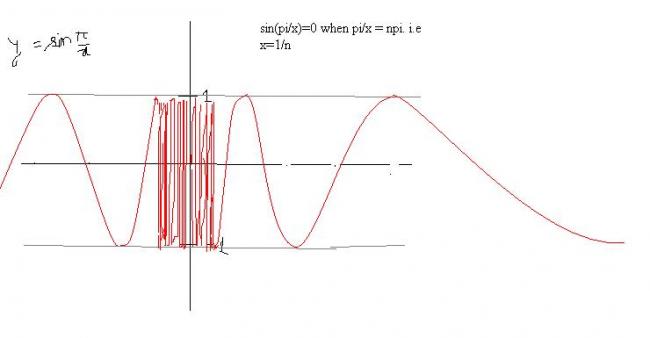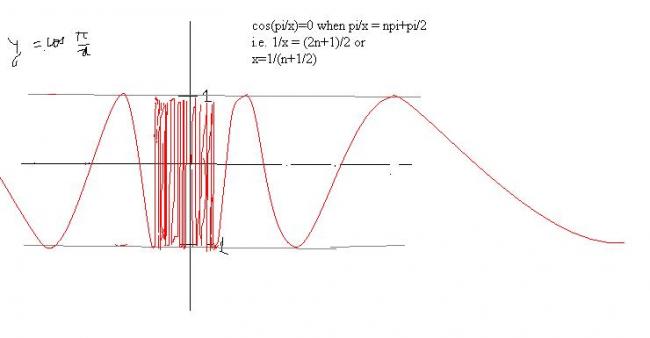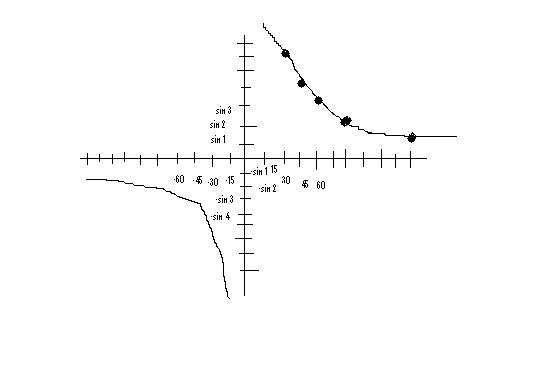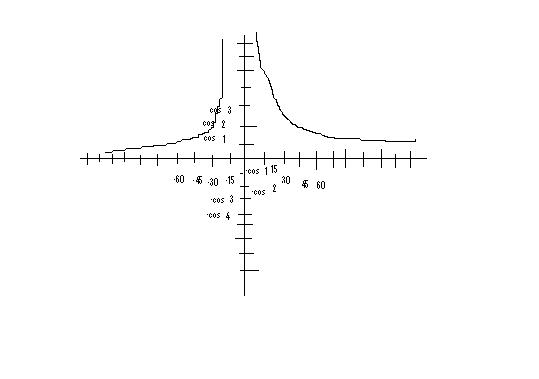plz try them. definitely worth trying.
editted the topic:
new topic:plot the graph of,
sin(1/x), cos(1/x)
-
UP 0 DOWN 0 1 15

15 Answers
okay.actually, sir, i am asking to draw the graphs of cos(1/x) and sin(1/x) individually. not asking for solutions of them. :)
what I was saying is that if you make the argument as π/x instead of 1/x then the points where the graph of sin(π/x) cuts the axis are simply 1/n instead of a scaled version 1/(n*pi)
oh. sorry sir, i didnt understand what u meant by roots before. now i got it.. fine,
plot the graphs of sin(pi/x) and cos(pi/x)
@honey: a very fundamental mistake. What is the range of cos@???? please check ur graph again
okay let me draw them.
y=sin(pi/x) will oscillate very frequently when x→0. (check the limit there)
further it is an odd function.
y=cos(pi/x) will essentially be the same graph because the limit at x→0 is the one obtained for y=sin(pi/x) but since it is an even function it will be symmetric about the y-axis.

gud work asish. jus that u cud have been more careful., i mean in stuff like cos(pi/x) whn x->inf., which is 1 and not -1.,
adn other points like sin(-pi/x)=-sin(pi/x), but i can understand ur idea of the graph is rite..so say given. good work. :)
gordo: ive not shown the entire graph. (yeah i kno that for x-->±∞ cos(1/x)-->1) actually the points where the graph cuts the x-axis should be somewhat 1/2, 1/3 ... but showing x-->∞ would be very cumbersome dont u think?)

